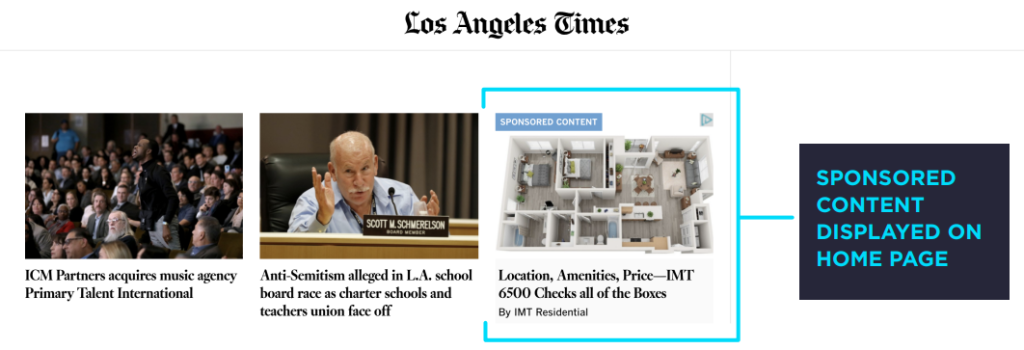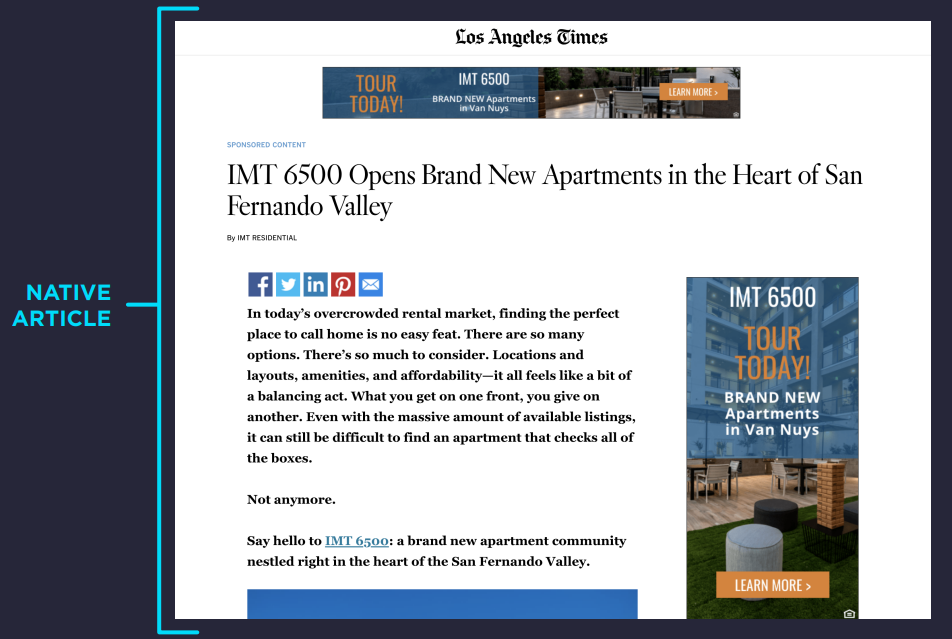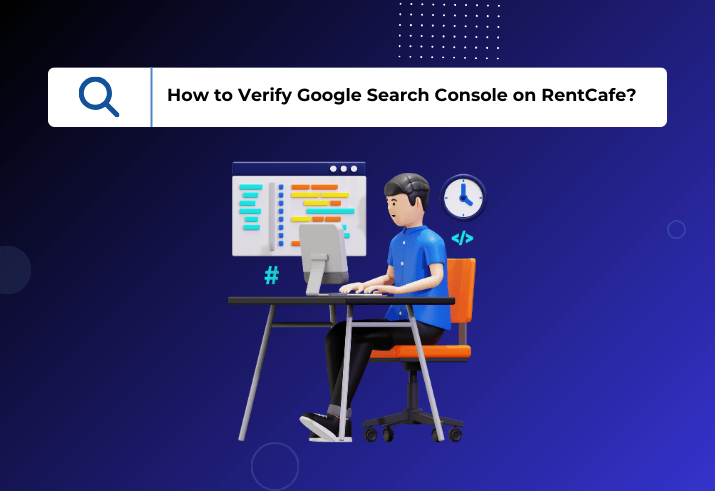Overview – What the heck is Native?
Native Advertising is a type of paid advertising that matches the look and feel of a publisher’s website. It is meant to look natural, organic, and…native.
Native Ads can appear in many formats, but one of the most popular types is the Native Article. A Native Article is a piece of content that appears to be featured in a digital publication but is sponsored by a brand.

According to Nativo, the company that holds the patents, the Native Article ‘is the most effective native ad format in digital media for driving engagement.”
Is it an ad? Is it organic?
While they can appear organic to the site, Native Articles are a form of paid media. The advertising can be subtle or on-the-nose. Many times, native ads are designed to not look like ads at all. (Though they are typically labeled as “Sponsored Content”). Think, the digital version of a magazine’s advertorial. The intention of the Native Article is to help the reader, without being salesy. It’s like secret advertising!
So..what’s the point?
Native Articles are pretty neat. But what impact can they have for multifamily? To us at Digible, it comes down to three “E’s”
- Educate
- Engage
- Explore
Educate: Native Articles can be a great way to educate consumers. Whether you are explaining the ins and outs of neighborhoods in Minneapolis, discussing new coworking offices in your building, or trying to promote a new build’s unique cloffice layout (yes, that is a real word to describe a closet that doubles as an office), Native Articles can help educate the readers. Because the articles are long-form content, roughly 500 words, they are a great chance to explain any nuances or exciting things. Take that 90-character word count limit!
Engage: This is the main attraction in the native advertising carnival of quirks. Native Articles drive engagement. Because they are featured on websites where users are scrolling through and reading content, it is natural for the user to spend time engaging with your content. Attention spans are dwindling, yes, but Native Articles aren’t showing up on social media where people are used to skipping through posts and scrolling for the next best thing. Metrics like Time on Content (how long someone spends on your article reading/looking at the pretty pictures) and Call-To-Action Rate (the rate at which a user clicks into your article and then clicks offsite to your brand’s website) are emphasized and optimized toward so that your article can really capture the reader’s attention.
Explore: Because Native Articles skew subtly, aka not-salesy, users who read your sponsored article are often more likely to explore your website from a self-driven approach. Maybe we should have named this e “empower” because the user does feel empowered to decide on their own whether or not to continue to the site after reading your article. And again, oftentimes they do! Native Articles are a great way to get the ball rolling and encourage exploring your brand. (Again, another E).
Subtle? I can’t be subtle!
That’s okay! Think of it as a spectrum. After all, native is a mid-funnel tactic. You can be as anti-brand as possible, only linking to your site at the very end and barely mentioning your brand by name. For example, an article titled, “Your Guide to Denver Neighborhoods: The dos and don’ts of moving to the mile-high city.” Or you can be more direct, with the article content clearly publicizing the property. Such as an article titled “Digible Apartments: Denver’s Newest Luxury Apartment Complex.” Maybe the reader has heard about your property. Maybe they haven’t. Native Articles can help improve that brand awareness, though. And sometimes featuring the brand name more can help with performance. At Digible, we like to test (more like love to test but we don’t want to sound too nerdy) and will always test multiple headline variations to see what performs best. Starting out with a subtle approach is our best practice, but don’t worry we’ll sprinkle your brand throughout the content!


Sounds cool, but prove it! How do they perform?
We’ve seen a lot of success with Native Articles at Digible. Outside of Digible, the industry average for the Real Estate Industry tends to outperform the general national benchmarks.

Metric definitions:
- CTR: The rate at which users click from the In-Feed Unit to the Content Landing Page (Native Article). CTR is an indicator of how effective the brand’s headlines and preview images are at driving user interest and initial engagement.
- Average Time on Content: The average amount of time that a user spends actively consuming the brand’s content while the browser tab is open and active. ATOC is an indicator of how effective the brand’s content is at retaining user interest, driving engagement and brand consideration.
- Call To Action Rate: The rate at which users click from the Content Landing Page to the brand website. CTA is an indicator of how effective the brand’s content is at driving immediate user interest in learning more about the brand and is a signal of intent.
Keep an eye on our case studies page for more Native Article case studies in the future!
Interested in learning more about Native Articles and Native Advertising? Let’s chat!








